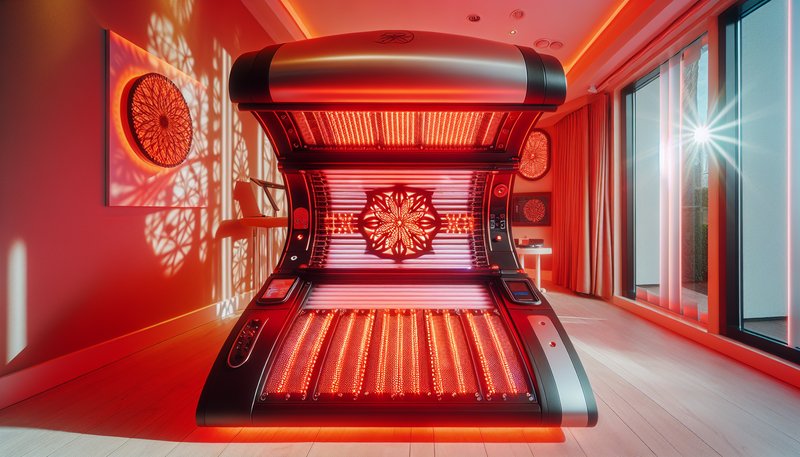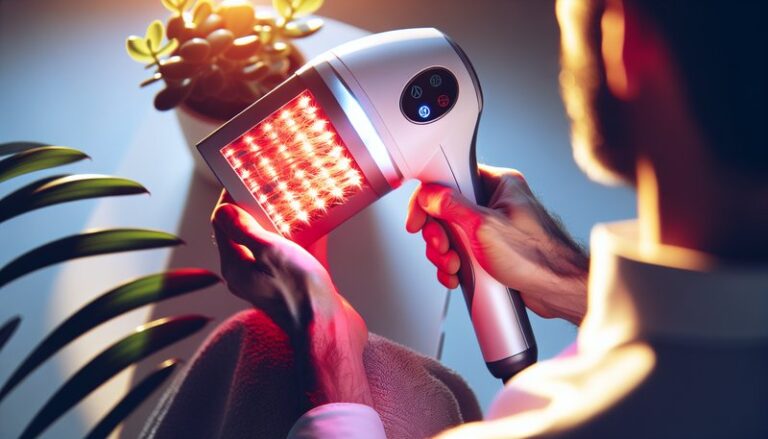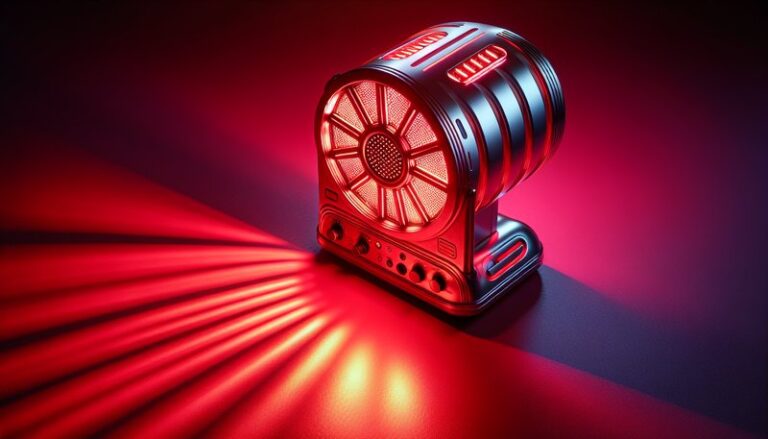Does Red Light Therapy At Tanning Salons Really Work?
Does Red Light Therapy at Tanning Salons Really Work?
Is red light therapy the latest beauty trend, or does it actually deliver results?
Red light therapy (RLT) has been gaining popularity within wellness circles and, more recently, at tanning salons as a potential way to enhance skin health, reduce inflammation, and improve overall appearance. This article will explore what red light therapy is, its benefits, whether it works as advertised in tanning salons, considerations to keep in mind, and alternatives available to achieve similar results.
Key Takeaways
- Red light therapy works by using specific wavelengths of light to stimulate cellular repair and regeneration.
- Many users report benefits such as improved skin tone, reduced inflammation, and faster wound healing.
- It’s essential to consider safety, skin type, and session frequency before engaging in red light therapy at tanning salons.
What is Red Light Therapy?
Red light therapy involves the use of low-level wavelengths of red light, typically in the range of 600 to 650 nanometers, to promote biological processes at the cellular level. This therapy works by penetrating the skin and stimulating the mitochondria in cells, leading to increased production of ATP (adenosine triphosphate) — the energy currency of cells.
Scientific Background
It has origins in phototherapy for skin conditions and has been supported by various studies linking it to positive outcomes in skin rejuvenation, pain relief, and inflammation reduction.
How Is It Used in Tanning Salons?
At tanning salons, red light therapy is generally offered as a separate treatment from traditional tanning beds. Users lie under panels emitting red light for approximately 10 to 20 minutes, often touted as an anti-aging treatment that can enhance skin health without the damaging effects of UV light.
What are the Benefits of Red Light Therapy?
Engaging in red light therapy can bring various advantages, often appealing to both casual users and those with specific skin concerns.
Skin Rejuvenation
One of the most significant benefits of red light therapy is its ability to stimulate collagen production. Increased collagen can lead to improved skin elasticity, reduced wrinkles, and a more youthful complexion.
Reduced Inflammation
RLT has been shown to help reduce inflammation and redness, making it beneficial for individuals with conditions such as acne, rosacea, and psoriasis. As a result, users often have clearer, calmer skin following treatment.
Enhanced Recovery
For those pursuing an active lifestyle or dealing with injuries, red light therapy can promote faster recovery. Its ability to increase circulation may enhance wound healing and reduce muscle soreness.
Additional Benefits
- Improved mood and sleep, attributable to increased serotonin levels.
- Potential anti-aging effects that prolong skin vitality.
Is it Possible to Achieve Results with Red Light Therapy?
There is a growing body of evidence indicating that red light therapy can produce noticeable results. However, the effectiveness can vary based on several factors including skin type, sensitivity, and treatment consistency.
What are the Advantages of Engaging in RLT?
Engaging in red light therapy offers several advantages:
Convenience and Accessibility
Red light therapy sessions are often brief, making them easy to fit into anyone’s routine. Many salons conveniently offer these treatments alongside other beauty services.
Read our complete guide Red Light Therapy Frequency
Non-invasive Treatment
Unlike other cosmetic procedures, RLT is painless and involves no recovery time, making it a favorable option for many individuals.
Safe for Most Skin Types
Generally, red light therapy is considered safe for all skin types, as it does not expose users to harmful UV rays.
What are the Disadvantages of Engaging in RLT?
While there are advantages, some drawbacks merit consideration:
Cost Commitment
While many salons offer packages, the cost of regular sessions can add up, leading some to consider more cost-effective home alternatives.
Limited Regulation
Since RLT services are offered in a variety of settings, it’s important to ensure that the equipment used is of high quality and operated by trained professionals.
Individual Variability
Results can vary significantly from person to person, and not everyone may experience the same benefits.
What are the Things to Consider Before Engaging in RLT?
Taking the time to consider several factors before committing to red light therapy can enhance the overall experience.
Skin Sensitivity
Individuals with light-sensitive skin should consult with a dermatologist to ensure that RLT is right for them and understand any precautions necessary.
Session Frequency
Understanding how often to schedule sessions is vital for achieving optimal results. Typically, treatments are recommended two to three times per week initially, tapering off as results are seen.
Environment and Equipment Quality
Ensuring that the salon utilizes high-quality equipment can play an important role in the effectiveness of the therapy.
Additional Considerations
- Consultation with a healthcare provider for those with underlying health conditions.
- Researching local salons or home devices to understand offerings better.
What are the Alternatives to Red Light Therapy?
If red light therapy at tanning salons doesn’t seem like the right fit, several alternatives exist for enhancing your skin health.
LED Light Therapy
Like RLT, LED light therapy uses varying wavelengths of light to treat skin issues, and it can target specific concerns, such as acne or pigmentation.
Microdermabrasion
This exfoliating treatment helps to remove dead skin cells, revealing fresher skin underneath without the use of light therapy.
Chemical Peels
Used to treat uneven skin tone and texture, chemical peels remove the uppermost layers of the skin, promoting regeneration.
Get the full context in Does Red Light Therapy Aid Weight Loss?
Additional Alternatives
- Topical treatments containing retinoids or peptides that stimulate collagen production.
- Regular facials that include exfoliation and hydration.
Conclusion: Is it Recommended to Engage in RLT?
Considering the potential benefits, red light therapy can indeed be recommended for those looking to improve skin health. However, individual results may vary, and it’s essential to approach it with realistic expectations. Consulting with professionals and exploring various options can help tailor the experience to fit personal skin needs.
Frequently Asked Questions
Is red light therapy safe?
Yes, red light therapy is generally safe for most individuals, as it does not involve exposure to harmful UV rays.
How often should I undergo red light therapy?
Most experts recommend starting with sessions two to three times a week for the best results, and adjustments can be made based on individual progress.
Can I use red light therapy at home?
Yes, several home devices are available for red light therapy, but users should ensure they are of good quality and follow the manufacturer’s guidelines.
Does red light therapy cause side effects?
Minimal side effects may include slight redness or irritation, but these usually resolve quickly, indicating that the treatment is well-tolerated.






